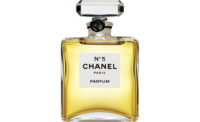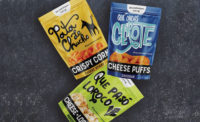10 Tips For Maximizing Your Package Redesign Dollars
![]()
10 Tips For Maximizing Your Package Redesign Dollars
Investigate your options for package printing and production. You can achieve striking results while controlling your costs.
By Mark Weisz
Contrary to popular belief, package redesign does not have to be a costly endeavor. Technological advances in printing and production, as well as in packaging materials, can achieve dramatic results on even the tightest budget.
You can maximize your redesign dollars by knowing what options and technologies are available.
Another key to cost-effective package revisions: Examine these printing options and production techniques at the earliest stages of design.
Innovations in printing and production methods have significantly reduced the cost of many services. A knowledgeable package designer is in the best position to take advantage of new techniques and ensure the most cost-efficient production runs.
Here are 10 tips for optimizing your package redesign while controlling production costs:
1. Talk to your supplier
Discuss all your options with your packaging supplier at the start of your redesign. This will prevent costly adjustments later.
Choose a design firm that can take advantage of special techniques or can handle production constraints.
Chris Frank of WorldPack Inc., a rotogravure printer and flexible packaging converter, says, "We've developed a specialized technique for metallizing shrink films that can add distinct brand appeal to a bottled product. Knowing your options up front gives you the flexibility within your budget to utilize special effects."
WorldPack prints colorful shrink-film labels for Stamford Hill Iced Tea. The bottle design and vivid graphics help the brand to stand out on shelf.
2. Gang running
Whether printing flexographic or offset, running multiple labels or packages together can add up to significant savings. Discuss the options with your supplier regarding press sheet layout, combining labels to maximize specialty ink colors over more labels, or running your job with other clients' jobs.
3. Plate swapping
When printing multiple packages or labels, or a package that requires updating on a regular basis, some suppliers offer the option of taking one printing plate and updating it on its own. This saves on plate costs, which can be expensive to reproduce as a complete set.
4. Direct-to-plate
You can eliminate film from the plate-making process, resulting in significant cost reductions. Also, the quality of direct-to-plate rivals traditional film-to-plate quality.
5. Flexo vs. rotogravure printing
Use rotogravure for printing roll-to-roll, high-volume film packaging. The quality is usually excellent and extra-fine detail is possible.
But flexographic printing technology has improved significantly. Its quality can be comparable to rotogravure, with line screens up to 130 lines per inch.
LallyPak is a converter of flexible packaging. Jacob Martin, LallyPak's Director of Sales, points out that flexographic plates and setup costs are 60-70 percent less than rotogravure.
6. Ink selection
A custom ink can add as little as pennies per package, while giving high visual impact. Specific shades in the red, orange and yellow families are effective at creating visual stimulation at the point of purchase. Using screens of a single color is another way to add color without adding additional inks. This stretches your dollars.
SeaCastle Frozen Fish Products uses CMYK and one custom-ink color—Pantone 7405—to establish an eye-catching brand identity that captures consumer attention in the frozen food aisle. Mark Weisz Design created the package design.
Here's another example of getting the most out of your inks and packaging materials: Glenny's Soy Chips uses a custom ink on a metallic surface to make its healthy product as exciting as mainstream snack brands.
7. Decorating techniques
Embossing has become a much more affordable option that delivers a premium look to paperboard cartons. With in-line embossing (embossing on press) and advanced plate materials, the cost savings allow many more brand managers to include this effect even in lower budget packages.
To add a true metallic foil effect to a package, hot-stamping provides the most options. But you may want to consider cold-stamp foil—a cost-effective alternative. Cold foil usually runs during the printing stage, eliminating the need to run a second pass for the foil effect (as required for hot-stamping).
Teal Lake wines from Australia use a three-part label with subtle colors and cold-foil stamping. The design positions the wine as affordable yet high quality for the U.S. market.
Altoona Hills Winery takes a different approach to reduce costs. It uses a "low-budget" label with CMYK plus one Pantone color. But it adds an upscale appearance to the label by hot-foil stamping the brand name. Altoona used a single hot-stamp plate for all its wine varietals to minimize costs.
8. Coating options
Coating printed paper or paperboard packaging protects its finish. Some coatings carry a higher price than others; UV and plastic coatings cost more than varnish, for instance.
Your designer can also specify matte or glossy finishes, based on availability from the supplier. Matte finishes are becoming more popular on film packaging.
9. Material selection
Specialty materials can add significantly to the final cost of the package. Metallized materials tend to be more expensive than other substrates. When discussing options with your supplier, find out if there are ink alternatives to metallic film or board, for example.
10. 3-D digital comps
When you need a three-dimensional preview of a package, consider using a 3-D digital rendering or comp. This can be more cost effective for previewing a product before creating an ad-quality physical comp. These images can even be e-mailed and reviewed by the client and edited on-the-fly.
Hi-Malt Beer took advantage of 3-D rendering software to create a digital image of its bottle and six-pack carton.
While it is no small undertaking, package redesign and enhancement need not be a costly feat.
The author, Mark Weisz, is President and CEO of Mark Weisz Design, a packaging design firm that offers state-of-the-art branding and packaging design to consumer products manufacturers. Contact him at 973.815.5200 or mark@markweisz.com
Why You should consider a redesign
Consumers enjoy a dazzling and dizzying array of product choices in the supermarket. According to the Food Marketing Institute, modern grocery stores can carry up to 100,000 different products at any given time. Plus, thousands more new items appear annually.
In the face of such stiff competition, a tight economy and shrinking marketing budgets, brand managers must find smarter, more effective ways to keep their products in the forefront of consumers' minds.
An often-overlooked tactic in the formulation of a brand's marketing strategy is a package redesign, not only as an enhancing measure but as a cost-saving method as well.
The benefits of redesigning your package are manifold. Here are three reasons why you should consider a package overhaul:
1. Contemporary appeal
Times change. As consumer tastes and values shift and evolve, brands must do the same in order to remain relevant and appealing. Packaging redesign and enhancement plays an integral role in keeping a product up-to-date. Even products that convey an old-fashioned image must maintain a contemporary connection with consumers.
2. Greater visual impact
A product's packaging is the manufacturer's primary line of defense against competitors. Sitting on the store shelf among a plethora of similar products, each brand vies for its share of consumer attention. A smart package redesign can give a product greater visual impact and help it achieve greater shelf presence.
3. Brand reinforcement or upgrade
With so many new products entering the marketplace, brand managers often need a way to remind consumers that new is nice, but reputation is everything. Many package design-oriented options are available to reinforce a brand's core values such as quality, reliability and innovation.
Rice package raises its look but not its cost
A retail brand of parboiled rice turned to Clifton, N.J.-based Mark Weisz Design to give its product packaging a fresh new look.
Before designing the package, the agency's research uncovered some facts. First, rice is a low-cost kitchen staple. The packaging would need to be inexpensive to produce in order to maintain the product's competitive price points.
The supermarket rice section is crowded with a wide array of offerings from plain to more exotic rice varieties, as well as flavored rice mixes.
The brand needed a striking package design to help it stand out among its competitors. And finally, the new brand image would have to work equally well on printed paperboard cartons and transparent poly bags.
The design firm's first approach was to update the logo. It created a "prize-ribbon" element to reinforce the brand's name. Fresh blue and yellow-gold colors highlight the brand name and give the package greater visual impact on the shelf.
To further differentiate the package and enhance the quality of its appearance, the design firm worked with a paperboard converter that utilizes in-line embossing, a relatively new method of embossing that occurs in the same pass as printing and die-cutting.
Advanced die-cutting/embossing plate materials allowed for further cost savings. Based on the client's run quantity, this additional enhancement costs less than half a cent per carton.
The bags bear a shiny metallic ink that was not previously available in this type of poly material. The brand owner worked with a flexible packaging converter to take advantage of this unique effect, while Mark Weisz Design creatively incorporated the metallic areas into the graphic design.
Looking for a reprint of this article?
From high-res PDFs to custom plaques, order your copy today!







